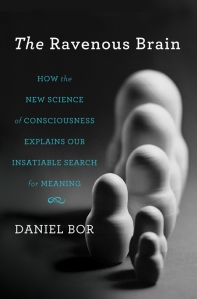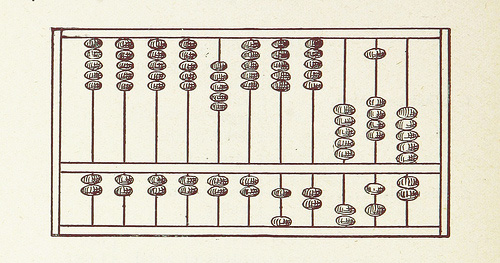“Generating interesting connections between disparate subjects is what makes art so fascinating to create and to view… We are forced to contemplate a new, higher pattern that binds lower ones together.”
It seems to be the season for fascinating meditations on consciousness, exploring such questions as what happens while we sleep, how complex cognition evolved, and why the world exists. Joining them and prior explorations of what it means to be human is The Ravenous Brain: How the New Science of Consciousness Explains Our Insatiable Search for Meaning (public library) by Cambridge neuroscientist Daniel Bor in which, among other things, he sheds light on how our species’ penchant for pattern-recognition is essential to consciousness and our entire experience of life. 
“The process of combining more primitive pieces of information to create something more meaningful is a crucial aspect both of learning and of consciousness and is one of the defining features of human experience. Once we have reached adulthood, we have decades of intensive learning behind us, where the discovery of thousands of useful combinations of features, as well as combinations of combinations and so on, has collectively generated an amazingly rich, hierarchical model of the world. Inside us is also written a multitude of mini strategies about how to direct our attention in order to maximize further learning. We can allow our attention to roam anywhere around us and glean interesting new clues about any facet of our local environment, to compare and potentially add to our extensive internal model.”
Much of this capacity relies on our working memory — the temporary storage that holds these primitive pieces of information in order to make them available for further processing — and yet what’s most striking about our ability to build such an “amazingly rich” model of the world is that the limit of our working memory is hardly different from that of a monkey, even though the monkey’s brain is roughly one-fifteenth the size of ours: Experiment after experiment has shown that, on average, the human brain can hold 4 different items in its working memory, compared to 3 or 4 for the monkey.
But, echoing Richard Feynman’s eloquent lament on the subject, Bor points to a dark side of this hunger for patterns:
“One problematic corollary of this passion for patterns is that we are the most advanced species in how elaborately and extensively we can get things wrong. We often jump to conclusions — for instance, with astrology or religion. We are so keen to search for patterns, and so satisfied when we’ve found them, that we do not typically perform sufficient checks on our apparent insights.”
Still, our capacity for pattern-recognition, Bor argues, is the very source of human creativity. In fact, chunking and pattern-recognition offer evidence forthe combinatorial nature of creativity, affirm Steve Jobs’s famous words that“creativity is just connecting things”, Mark Twain’s contention that “all ideas are second-hand”, and Nina Paley’s clever demonstration of how everything builds on what came before.
The arts, too, generate their richness and some of their aesthetic appeal from patterns. Music is the most obvious sphere where structures are appealing — little phrases that are repeated, raised a key, or reversed can sound utterly beguiling. This musical beauty directly relates to the mathematical relation between notes and the overall logical regularities formed. Some composers, such as Bach, made this connection relatively explicit, at least in certain pieces, which are just as much mathematical and logical puzzles as beautiful musical works.
“But certainly patterns are just as important in the visual arts as in music. Generating interesting connections between disparate subjects is what makes art so fascinating to create and to view, precisely because we are forced to contemplate a new, higher pattern that binds lower ones together.”
What is true of creative skill, Bor argues, is also true of our highest intellectual contribution:
“Some of our greatest insights can be gleaned from moving up another level and noticing that certain patterns relate to others, which on first blush may appear entirely unconnected — spotting patterns of patterns, say (which is what analogies essentially are).”
Best of all, this system expands exponentially as it feeds on itself, like a muscle that grows stronger with each use:
“Consciousness and chunking allow us to turn the dull sludge of independent episodes in our lives into a shimmering, dense web, interlinked by all the myriad patterns we spot. It becomes a positive feedback loop, making the detection of new connections even easier, and creates a domain ripe for understanding how things actually work, of reaching that supremely powerful realm of discerning the mechanism of things. At the same time, our memory system becomes far more efficient, effective — and intelligent — than it could ever be without such refined methods to extract useful structure from raw data.”
Though some parts of The Ravenous Brain fringe on reductionism, Bor offers a stimulating lens on that always fascinating, often uncomfortable, inevitably alluring intersection of science and philosophy where our understanding of who we are resides.
| Original Post Appeared on Brainpickings.org

